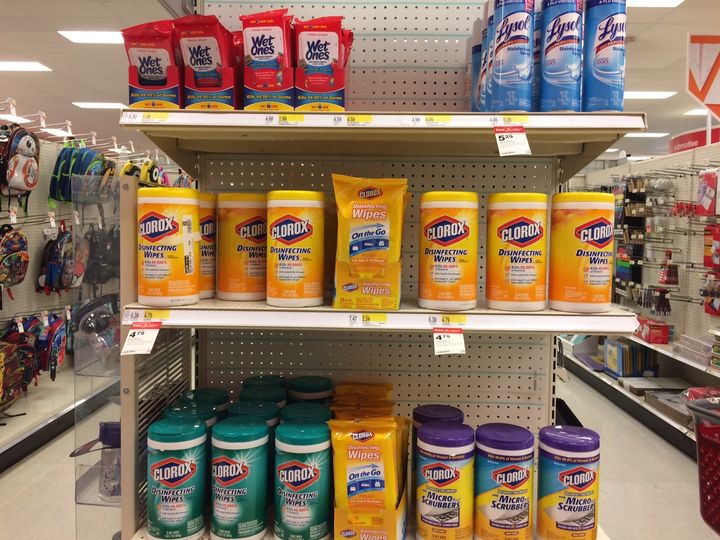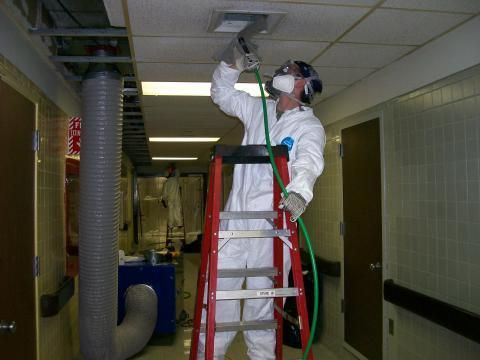Back to School means more than shopping for new outfits and backpacks. For millions of parents, especially parents whose children have asthma and other health or learning issues, it means ensuring that the schools their children attend won’t make them sick or interfere with their learning.
Today, that task is harder than ever. There isn’t a state in the nation that doesn’t need to invest in school renovations to reduce water leaks, molds, dusts, and legacy toxics like lead and asbestos.

There was hope when President-elect Trump announced that his interest in infrastructure included schools. The national Coalition for Healthier Schools, representing scores of NGOs, responsibly weighed in with a White Paper documenting unmet needs and underscoring the proven connections between children’s educational outcomes and the environmental conditions of classrooms. We encouraged federal-state-NGO partnerships focused on preventing facility problems and preventing children’s exposures. In January, the Senate Democrats added their call for federal investments in school infrastructure. We are still waiting for the Administration’s proposal.
Nationwide, 50 million children attend public schools every day. At least 9 percent have asthma, over 12 percent are in special education, a growing number live in poverty or are challenged by autism—conditions that can make them more vulnerable to environmental stressors in schools. Yet the schools their states require them to attend are effectively unregulated by any agency at any level for environmental conditions. Critics often blame teachers when kids are bored or don’t perform well on standardized tests. But a growing body of evidence (from Harvard, Berkeley, Tulsa; also, Japan and Scandinavia) confirms common sense: children do measurably better in schools that are clean, dry, quiet; have good indoor air; and control dusts and provide thermal comfort. Still, children from poor neighborhoods, or with special health or learning needs, too often endure conditions known to undercut health, thinking, and learning. These conditions include lead in drinking water, PCBs in caulk and lighting and other legacy toxics, growing molds, poor sanitation, leaking roofs and pipes, no ventilation, and no air conditioning.

Mold damaged classroom.
Hopefully, there is movement in Congress. The House Committee on Education and the Workforce is considering the Rebuild America’s Schools Act of 2017 (HR 2475), a $100 billion, ten-year proposal. As with the Senate Democratic plan, the goal is to make sure public schools are front and center in the infrastructure conversation. Moreover, there is movement at the Environmental Protection Agency. Despite the President’s proposed 31 percent budget cut to EPA for FY18, Administrator Scott Pruitt recently invited a meeting with child and education advocates, who found an interest in school infrastructure and children’s issues. Lead in water – a growing issue nationally – was discussed with EPA executives, as were topics such as indoor air and research addressing children’s school-based environmental exposures. In fact, EPA’s proven programs – the Agency had engaged with over 40,000 local school staff until the effort was shut down by the previous administration – should play a critical role in promoting healthy children and healthy educational facilities.

Disinfecting wipes, commonly used improperly in classrooms.
It has been well documented since the US GAO’s first (and only) report in 1995 on school conditions that schools neglect their facilities. It is also documented that better buildings can boost attendance and save taxpayer money. So saving existing school infrastructure is really important. Indeed, the best way to conserve existing school buildings is to ensure that states, communities, and schools know how to best manage them. We have proposed a modest bump of $1 per child enrolled in schools and childcare (about $65 million) for EPA to restore and expand its capacity across several program areas: indoor air, chemical safety, clean water and clean air, research, and children’s health. The EPA’s investments in symposia and training and research grants must be sufficient to disrupt the old pattern of neglecting school facilities and ignoring the effects on children and must engage more parents, communities, and other stakeholders.

Asbestos being removed from Lincoln High School, Lincoln, RI.
So this summer, remember that Back-to-School time is about more than just new outfits and backpacks. One of the biggest challenges we face as a nation, and as parents, is raising children to become healthy, educated adults. It is time to ask, Does my child’s school building have clean air and clean water, and is it clean, dry, quiet, and ready for all its occupants? All too often, the answer will be no!
If we want world-class schools for the next generation, we need to start now: addressing children’s risks and exposures and finding the political will to rebuild school infrastructure.
Claire L. Barnett is the founder and executive director of the Healthy Schools Network. She was recently recognized by the Center for Environmental Policy at American University’s School of Public Affairs with the William K. Reilly Environmental Leadership Award.